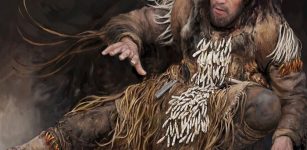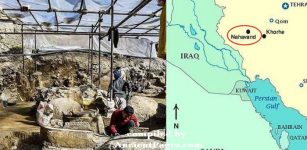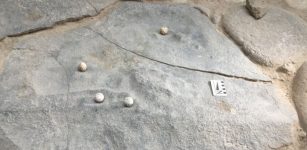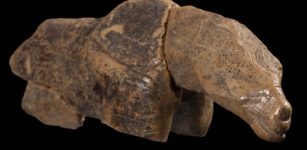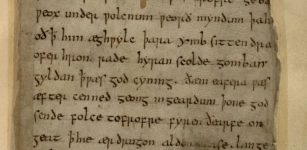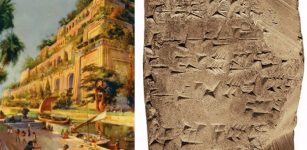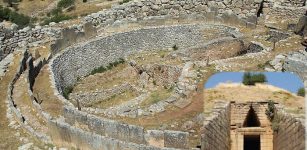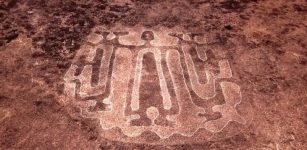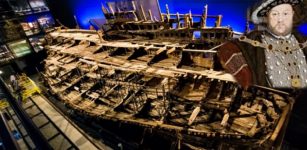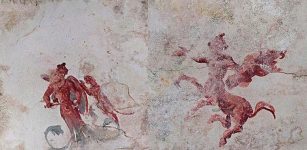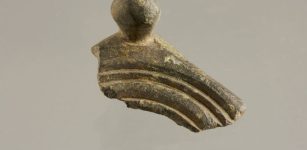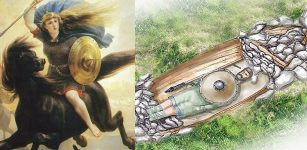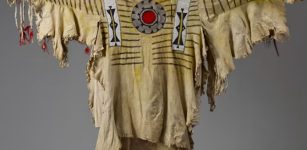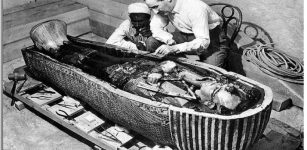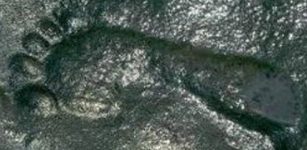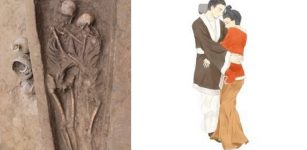Ancient Burial Tomb Of A Noble Mongol Warrior With Weapons Unearthed In The Moldavian Village
Conny Waters - AncientPages.com - An ancient burial place of a noble Mongol warrior has been unearthed in the vicinity of the village of Glinoe, Slobodzeya region, the Republic of Moldova.
Archaeologists informed that the warrior belonged to the highest military aristocracy, based on a set of weapons discovered in his grave, and a horse burial arranged in the vicinity of his tomb.
Mongolian Empire Warrior Mural. Image credit: Gary Todd - CC0 1.0
The discovery was made while employees of the research laboratory “Archaeology” of the Pridnestrovian State University, Tiraspol, Moldovia were studying the destroyed barrows in the area.
The unearthed artifacts of the warrior’s tomb include a long saber, iron arrowheads of various shapes, a dagger, and separate parts of a birch bark quiver that have been preserved. Researchers have made the primary analysis of the objects and the elements of this ancient burial rite characterized by the shape of the pit, and the orientation of the skeleton, writes The European Times, which cited novostipmr.com.
The obtained data made it possible to determine the time attribution of the burial, and the researchers could date the items to the end of the 13th century.
The 13th century era was an important time of domination of the Golden Horde in the steppes of the Northern Black Sea region.
based on the skeleton' analysis, researchers determined that the man during his lifetime was about 1.6 meter tall, but the saber found with him was 1.3 meters long. It means that the warrior wielded a saber almost as tall as his. The hilt is located at the shoulder bones of the buried, and the edge of the blade reaches the lower leg of the warrior.
Decisive Golden Horde victory in the Battle of Mohi. Battle of Mohi 1241 between Hungarians and Mongols - - Cod. 2623, fol. 29r: Geschichte der orientalischen Königreiche fol. 29r 1350-1374 URL: http://data.onb.ac.at/rec/baa5023497 - Public Domain
It is believed that the warrior was strong and had skill in performing tasks, especially with the hands. The shape of the skull and prominent cheekbones, in turn, speak of its Mongoloid origin.
The quiver set indicates that this man was a skilled archer. He knew how to handle arrows with different tips, differing in shape and weight. Among them are massive three-lobed and diamond-shaped. When skillfully used at short range, they pierced armor and chain mail, making them very effective against heavily armed infantry or cavalry.
It will take time to restore the warrior's saber because this and other objects are deformed by corrosion that change the artifacts during seven centuries.
The burial of the Mongol warrior may be a reflection of the internecine war in the Golden Horde between Khan Tokhta and the governor of the western territories, Beklarbek Nogay. At the end of the 13th century, Nogai ruled the lands between the Danube and Dnieper rivers and was so strong that he pursued an independent policy and minted his own coin. Even the emperor of Byzantium, Michael Palaiologos, intermarried with him, marrying his daughter Euphrosyne for Nogai, commented Doctor of Historical Sciences Vitaly Sinika, a head of the expedition of the Research Laboratory “Archaeology”,
The powerful beklyarbek (ruler over rulers) helped one of the descendants of Genghis Khan Tokhte win the struggle for power in the Golden Horde. But Tokhtu, who took the throne, was worried about the independence of his ally, which ultimately led to a military conflict.
The battle between Nogay and Tokhta, according to some Arab sources, took place in 1300 in the place of Kukanlyk. However, historians give different locations; some believe that this is the Kuyalnik estuary, others believe that we are talking about Lake Kuchurgan. One way or another, but the battle ended in the defeat and death of Nogai.
It is possible that a Mongol warrior from the vicinity of Glinoye participated in this Kukanlyk battle, which took place somewhere between the Dniester and the Southern Bug.
Most probably, he was seriously wounded and die during the retreat of the remnants of Nogai’s troops. So far, this is only a version, further research will either confirm or refute it. And the fact that archaeological excavations make it possible to discover new grains of the ancient history of Pridnestrovie is confirmed every season.
Written by Conny Waters - AncientPages.com Staff Writer



